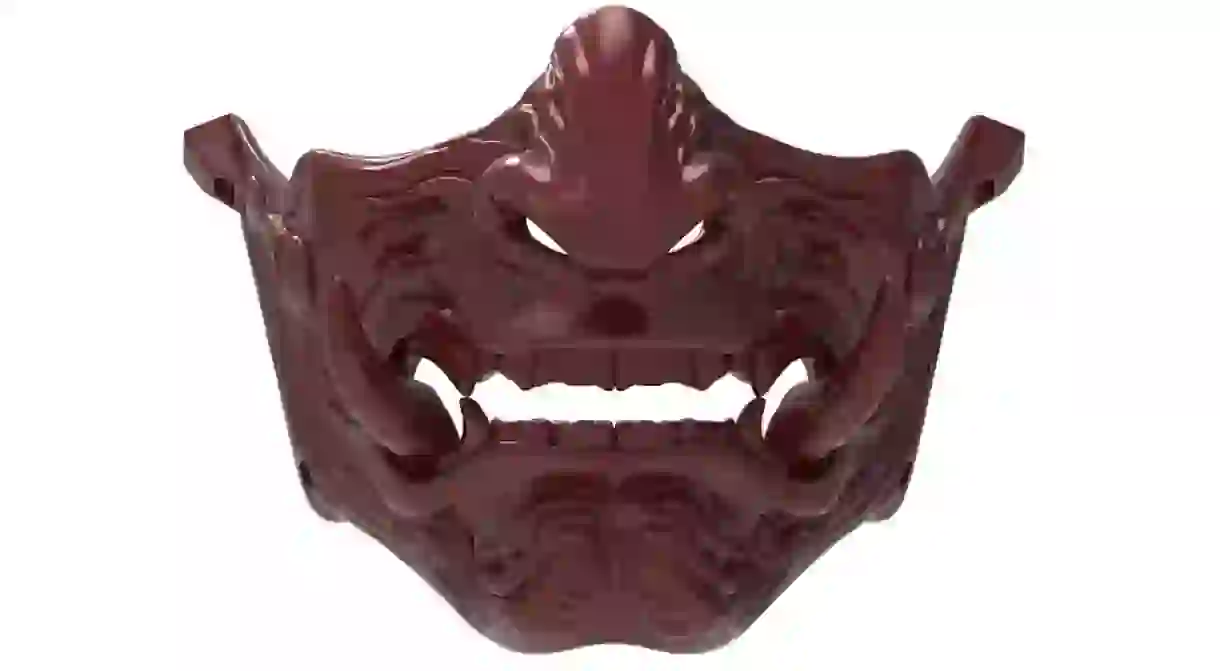Traditional Japanese Masks and What They’re Used For

Traditional Japanese masks are mostly decorative and are available for sale at shrine festivals and events. Others are worn during certain Shinto dances or by actors performing a role on the stage. Most of these masks are archetypes borrowed from myth, ancient dances or Noh theater, and they have become some of the most popular Japanese masks that you’ll see today.
Oni
Oni are demons. They are usually depicted as red-faced and angry with long sharp teeth, but these creatures aren’t the most frightening of Japan’s monsters. Oni masks are most common during the Bean-Throwing Festival, also known as Setsubun, when people wear them for festival performances at shrines. Parents will even wear them at home to frighten their children, while the kids throw beans to scare the “oni” away and invite good luck into the house for the year.

Tengu
Tengu are the fearsome demi-gods who protect the mountains. These demon-like creatures are depicted with red faces and angry expressions. But their most obvious feature is a long, red nose. In the past, tengu were more birdlike. As they became human, that beak turned into a nose but kept its long shape. Tengu masks are used for Noh stage plays and certain Shinto festivals. They’re also often used as a decoration since the tengu are thought to frighten bad spirits and bring good luck.

Kitsune
Kitsune masks or fox masks are worn by participants in certain Shinto festivals or by attendees just for fun. Historically, foxes were viewed as magical creatures with the ability to shapeshift. They were also seen as messengers of Inari, the Shinto god of rice, commerce, and prosperity. As a result, they are important figures in some festivals involving this god.

Hyottoko
Hyottoko is a silly, childlike figure with a comical expression on his face. His mouth is almost always rounded and skewed to one side, as the stories about him usually involve him blowing on a bamboo pipe. In some traditional Japanese dances during festivals, dancers perform the role of the clown while wearing Hyottoko masks.
Okame (Otafuku)
Okame is like the female version of Hyottoko, and their masks usually appear together. They can be worn by dancers to perform amusing, silly dance steps. Like her male counterpart, Okame is a positive figure and sometimes thought to bring good luck. She is portrayed as a woman with a large, oval-shaped head and smiling eyes. She is also known as otafuku.

Noh & Kyogen masks
Kyogen is often performed as comic relief during the intermissions of Noh theater, which is typically more serious and solemn. In Kyogen, actors performing non-human roles wear masks, and in Noh, masks are much more common, with hundreds of different types available. Most of the masks on this list also appear in Noh theater or are based on it.

Men-yoroi
Men-yoroi were the armored masks worn by warriors and samurai. They were decorative and customizable according to the wearer’s preference and fit. Somen covered the wearer’s entire face and offered the most protection, while menpo were partial coverings. These days, most men-yoroi are on display in museums.

Check out these tours and excursions in Japan.













